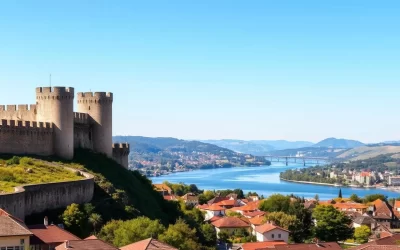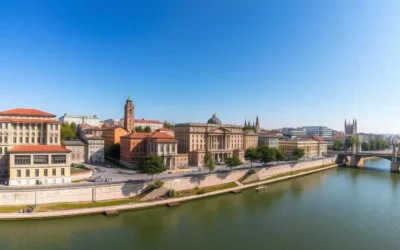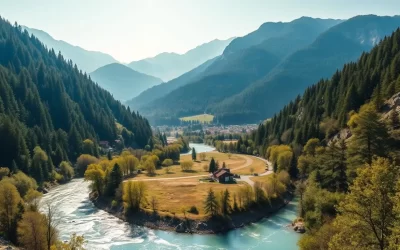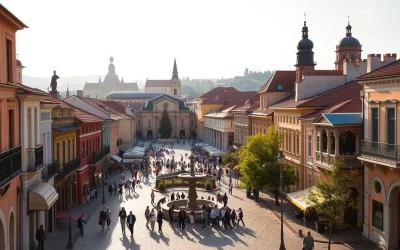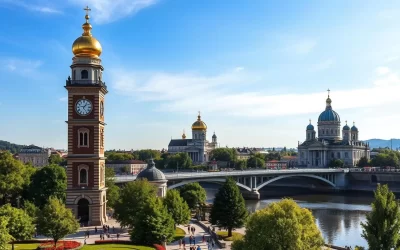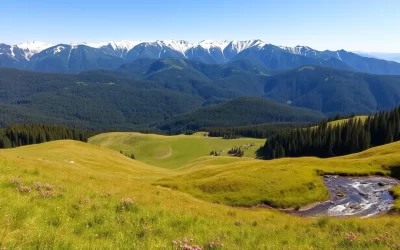✓ Accommodations✓ Flights✓ Rental Cars
Nestled at the foot of the Vrsac Mountains, this charming city is a hidden gem in Europe, offering a unique blend of history, culture, and natural beauty.
As you explore the city, you’ll discover a rich cultural heritage shaped by Serbian, Hungarian, and Romanian influences. The city’s architecture, cuisine, and traditions reflect this diverse heritage, making it an ideal destination for travelers seeking authentic experiences.
From the iconic Vrsac Castle to its vibrant wine culture and outdoor activities, there’s something for every type of traveler. Whether you’re a history buff, culture enthusiast, or outdoor adventurer, you’ll find plenty of attractions to enjoy in this charming city.
Vrsac, Serbia: A Hidden Gem in the Balkans
In the Banat region of Vojvodina, lies the hidden gem of Vrsac, Serbia, full of history and natural beauty. As you plan your trip to this charming city, you’ll discover why it’s a must-visit destination in the region.

Location and Getting There
Vrsac is strategically located near the Romanian border, approximately 85 kilometers northeast of Belgrade, making it an accessible place to visit. You can reach Vrsac by train from Belgrade, or use the convenient bus services available. If you’re driving, rental cars are a great option for your travel plans.
The city’s proximity to major transportation routes makes it an ideal spot for those looking to explore the surrounding areas.
Best Time to Visit
The time you choose to visit Vrsac can greatly impact your experience. Spring (April-June) is ideal for mild weather and blooming vineyards, while fall (September-October) is perfect for the wine harvest season and cultural festivals. Vrsac has a continental climate with hot summers and cold winters, so plan your visit accordingly.
For a fulfilling experience, consider staying for 2-3 days to explore Vrsac and its surroundings without feeling rushed. You can also combine your visit with other nearby destinations in Serbia or take a day trip to neighboring Romania, making the most of your trip to the country.
Explore the Iconic Vrsac Castle
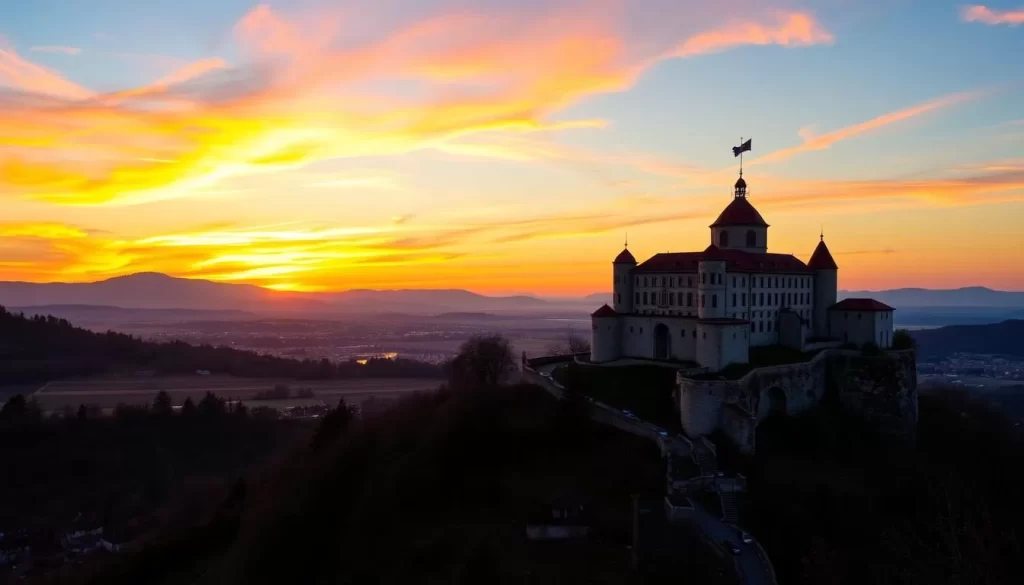
As you explore Vrsac, Serbia, you’ll discover the iconic Vrsac Castle, a testament to the area’s medieval past. This 15th-century defensive fortress, built against Ottoman invasions, stands proudly on Vrsac Hill, offering a blend of history and panoramic views that captivate visitors from around the world.
History of the Castle
Vrsac Castle, known locally as Vrsacka Kula, has a rich history dating back to the 15th century. Constructed as a defensive fortress, it played a crucial role in protecting the region from Ottoman invasions. Over the centuries, the castle has witnessed numerous historical events, and its remaining tower and walls are a testament to its significance. Archaeological discoveries at the site have provided valuable insights into medieval life, highlighting Vrsac’s strategic importance in the area.
The castle’s architectural features, including its partially restored tower and walls, maintain their historical authenticity, giving visitors a glimpse into the past. The castle’s history is a compelling reason for visitors to explore this medieval fortress.
Panoramic Views from Vrsac Hill
One of the highlights of visiting Vrsac Castle is the breathtaking view from Vrsac Hill. The hill is accessible via a hiking trail from the city center, approximately 2 km, which takes around 30-45 minutes to complete for average hikers. From the top, you can see the entire city of Vrsac, the surrounding vineyards, and the vast plains stretching into neighboring Romania on clear days.
The best time to visit Vrsac Hill for optimal photography is during sunrise or sunset, when the lighting creates a magical atmosphere over the city and surrounding landscape. This makes for a memorable experience, capturing the essence of Vrsac’s beauty.
Discover Vrsac’s Rich Architectural Heritage
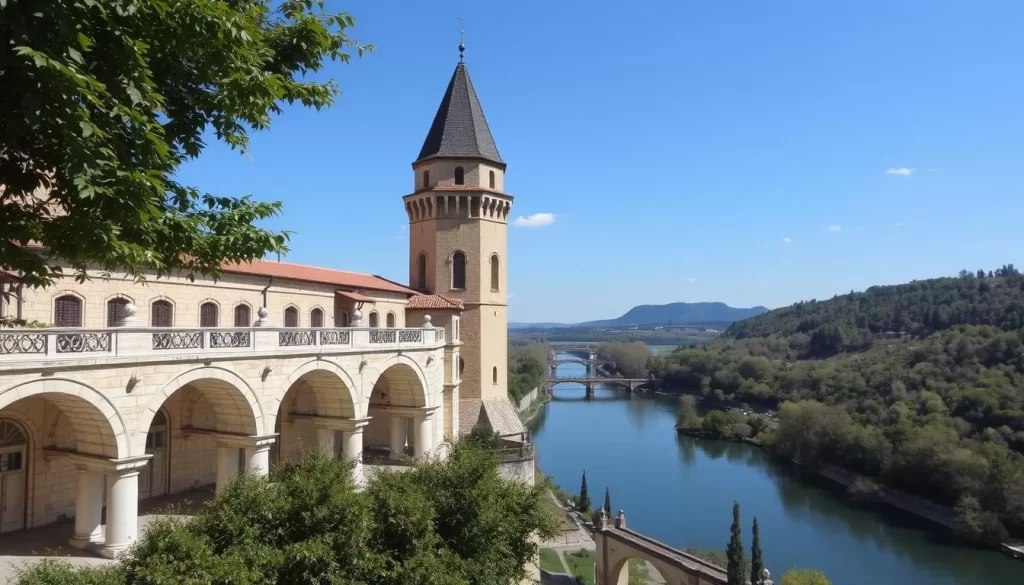
As you wander through Vrsac, you’ll discover a treasure trove of architectural gems that tell the story of its past. The town’s rich cultural heritage is reflected in its numerous historic buildings, showcasing a blend of styles and influences.
The Town Hall and City Center
The Town Hall (Gradska Kuća) is a stunning example of neo-renaissance architecture, built in the late 19th century. Its distinctive clock tower and ornate façade dominate the main square, making it a must-visit landmark. The city center is also home to a charming pedestrian zone, with well-preserved buildings showcasing various architectural styles from baroque to art nouveau.
The Old Pharmacy and Historic Buildings
The Old Pharmacy (Apoteka), dating back to 1784, is one of the oldest pharmacies in Serbia and now houses a fascinating museum of pharmaceutical history. Other notable historic buildings include the Concordia building, the Sterija family house, and the Bishop’s Palace, each with its own unique story and architectural significance. Vrsac’s architecture reflects the multicultural history of the region, with influences from Serbian, Hungarian, German, and Romanian traditions visible in the building styles and decorative elements.
You can explore these architectural landmarks on a self-guided walking tour through the historic center, which takes approximately 2-3 hours. Key photo opportunities include the Town Hall, the Old Pharmacy, and the picturesque pedestrian zone, making for a memorable visit to this charming city.
Visit the Orthodox Church of Father Nikolaj

Discover the serene beauty and historical importance of the Orthodox Church of Father Nikolaj, a cherished landmark in Vrsac. This church is not only a significant religious site but also a testament to the city’s rich cultural heritage and history.
Religious Significance and History
The Orthodox Church of Father Nikolaj, founded in 1785, has been a spiritual center for the Orthodox community in Vrsac throughout various historical periods. Its dedication to St. Nicholas underscores its importance within the Serbian Orthodox tradition. The church played a crucial role in preserving Serbian culture and identity during the Ottoman and Habsburg rule, serving as a beacon of faith and resilience.
Architectural Features and Artwork
The church boasts impressive architectural features, including a distinctive bell tower and a dome structure that blends baroque and Byzantine elements. The interior is adorned with remarkable artwork, notably the iconostasis created by renowned artists of the period. The intricate wood carvings and the valuable collection of religious artifacts add to the church’s beauty and historical significance, making it a must-visit church st. in the city.
When visiting, remember to dress modestly, covering your shoulders and knees. Photography is allowed, but it’s best to check with the church authorities regarding any specific restrictions. Guided tours may be available, offering deeper insights into the church’s history and art. Additionally, Vrsac is home to other significant religious sites, such as the Roman Catholic Cathedral and the Manić Monastery, which dates back to the 17th century, enriching the city‘s diverse religious heritage.
Experience Vrsac’s Wine Culture
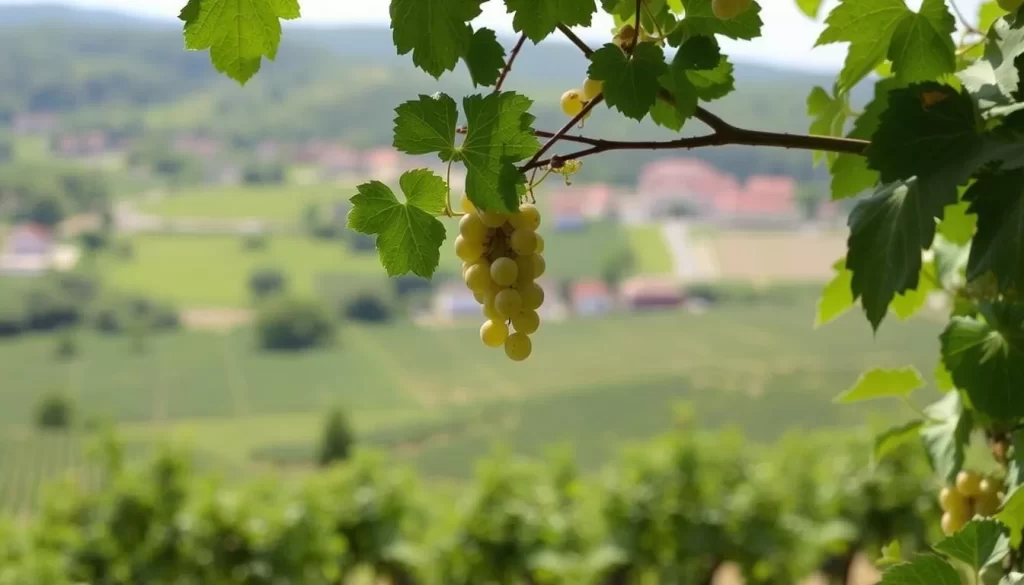
Discover the flavors of Vrsac, a city steeped in viticulture tradition, where the unique microclimate and soil composition create ideal conditions for wine production. Vrsac’s long-standing tradition of viticulture dates back to Roman times, with the region’s wines gaining recognition among enthusiasts.
Local Wineries: Sočanski, Soul Wine, and Rnjak
Vrsac is home to some of the best wineries in Serbia, including Sočanski, Soul Wine, and Rnjak. These wineries are known for producing high-quality wines that showcase the region’s potential.
Sočanski is recognized for its traditional winemaking methods, while Soul Wine offers a modern twist on classic varieties. Rnjak, on the other hand, is celebrated for its innovative approach to viticulture.
The local white wine varieties, such as Kreaca (indigenous to the area), Riesling, and Chardonnay, are particularly noteworthy. Each winery has its unique history, specialties, and signature wines, making them worth visiting.
Wine Tasting Tours and Experiences
Visitors to Vrsac can enjoy a range of wine tasting experiences, from guided tours to wine and food pairings. The tours typically range from €10-30 per person, depending on the package, and are available in multiple languages.
One of the highlights of Vrsac’s wine calendar is the annual “Grape Ball” (Grožđebal) festival, held in September to celebrate the harvest. The event features parades, folk performances, and extensive wine tastings throughout the city.
For wine enthusiasts, practical tips include arranging transportation between wineries, understanding shipping options for purchasing wines, and pairing local wines with traditional Serbian cuisine.
Explore Cultural Landmarks and Famous Natives
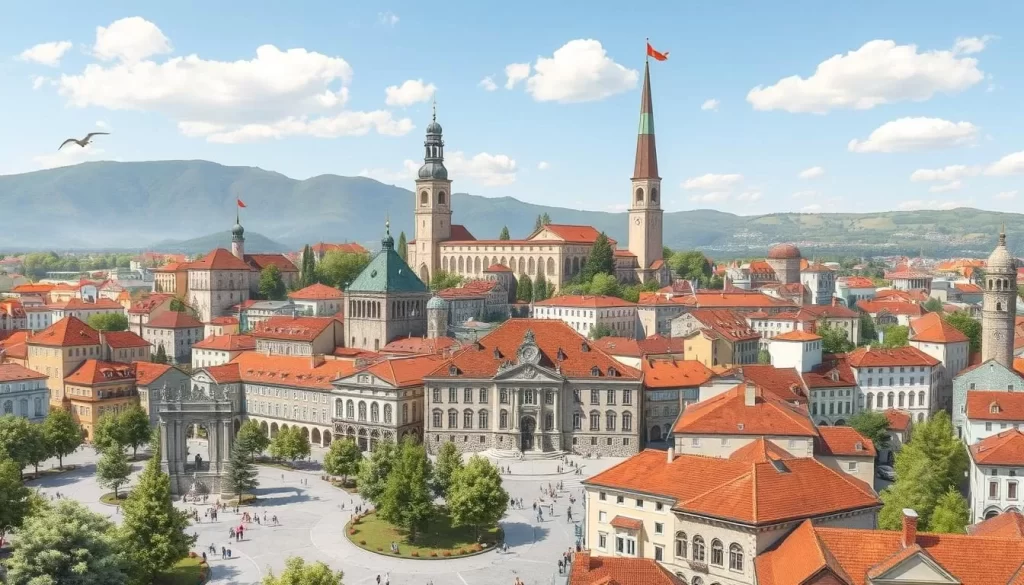
As you’ll explore Vrsac, you’ll discover a rich tapestry of cultural heritage and history, shaped by its most famous sons. The city is a treasure trove of Serbian culture, with landmarks and natives that have significantly contributed to the country’s rich history and art.
Paja Jovanović: Vrsac’s Famous Painter
Paja Jovanović, one of Serbia’s most celebrated realist painters, was born in Vrsac in 1859. His historical compositions and portraits gained international recognition, showcasing his mastery of art. The Paja Jovanović Museum houses an impressive collection of his original works, personal belongings, and documents, offering insights into his artistic development.
Jovan Sterija Popović and Literary Heritage
Jovan Sterija Popović, the founder of Serbian drama, was another illustrious native of Vrsac, born in 1806. His comedies and tragedies laid the foundation for modern Serbian theater, enriching the city’s cultural landscape. The annual Sterija’s Theatre Days festival celebrates his legacy, attracting performers and enthusiasts from across the Balkans.
Vrsac’s cultural events and landmarks, including the National Museum with its archaeological, ethnographic, and historical collections, tell the story of the region from prehistoric times to the present. These cultural figures have not only shaped Vrsac’s identity but also contributed significantly to Serbian national culture, making the city a crucial destination for those interested in cultural history and city heritage.
Vrsac, Serbia: Best Things to Do – Top Picks for Outdoor Enthusiasts
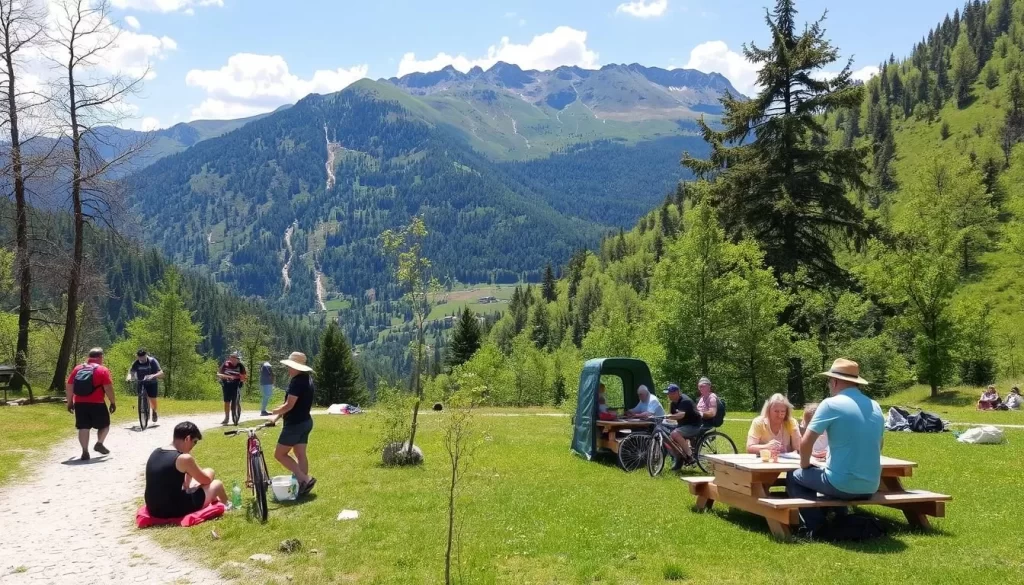
Vrsac, Serbia, is a treasure trove of outdoor experiences, from hiking and aviation to seasonal activities that make the most of the region’s natural beauty. As an outdoor enthusiast, you’ll find that Vrsac offers a unique blend of adventure and tranquility amidst its picturesque hills and rich biodiversity.
Hiking Trails on Vrsac Hills
The Vrsac Hills offer a network of hiking trails that cater to different skill levels and preferences. The Vrsac Tower Trail, a moderate 5km round trip, provides panoramic views of the surrounding landscape. For more experienced hikers, the Kula-Crkvica circuit is a challenging 12km trail that showcases the area’s rich flora and fauna. As you hike, you’ll encounter protected plant species, opportunities for bird watching, and a variety of seasonal wildflowers that make each season a unique experience.
Sports Airport and Aviation Experiences
Vrsac’s Sports Airport, the fourth largest in Serbia, is a hub for aviation sports and offers a range of experiences for visitors. You can enjoy scenic flights, glider rides, or even take introductory flying lessons. The airport’s history dates back to 1911 when the first flight took place from the hills of Vrsac, marking the beginning of a long tradition of aviation in the region. The favorable wind conditions make it an ideal location for flight training and air sports.
Seasonal Outdoor Activities
Vrsac offers a variety of seasonal outdoor activities. In the summer, you can enjoy mountain biking, paragliding, and outdoor swimming. Autumn brings the wine harvest season, making it a great time for hiking. In the winter, snow activities are available when conditions permit, and spring is ideal for nature photography. For the best experience, consider renting equipment or joining a guided tour to explore the more remote natural areas surrounding Vrsac.
Whether you’re looking for adventure or a chance to connect with nature, Vrsac has something to offer. With its diverse range of outdoor activities and stunning natural beauty, it’s a destination that will leave you wanting more.
Conclusion: Making the Most of Your Visit to Vrsac
Whether you’re looking for a cultural immersion or an outdoor escapade, Vrsac has something for everyone. This charming Serbian town offers an authentic experience, blending cultural heritage, natural beauty, and wine traditions.
To make the most of your trip to Vrsac, consider a 2-3 day itinerary that covers the major attractions. Start with exploring the iconic Vrsac Castle and its panoramic views, followed by a visit to the Orthodox Church of Father Nikolaj. Don’t miss the opportunity to indulge in the local cuisine, including specialties like štrudla and vršačka šnicla, paired with wines from local wineries.
For accommodations, Vrsac offers a range of options, from boutique hotels in historic buildings to family-run guesthouses and modern apartments. Prices vary, but you can find comfortable stays to fit your budget. Consider staying in the city center to be close to major attractions.
Day trips from Vrsac can enhance your travel experience. Visit the Deliblato Sands, Europe’s largest continental sand area, or explore the charming village of Gudurica with its multicultural heritage. For those willing to venture further, a quick trip across the border to Romania is also an option.
As you plan your visit, keep in mind the local transportation options, useful Serbian phrases, and seasonal considerations. Check for upcoming events and festivals that might influence your travel plans. With its unique blend of culture, nature, and hospitality, Vrsac is a place that will leave a lasting impression on you.
The above is subject to change.
Check back often to TRAVEL.COM for the latest travel tips and deals.

